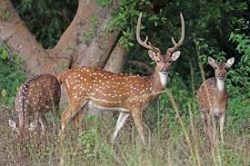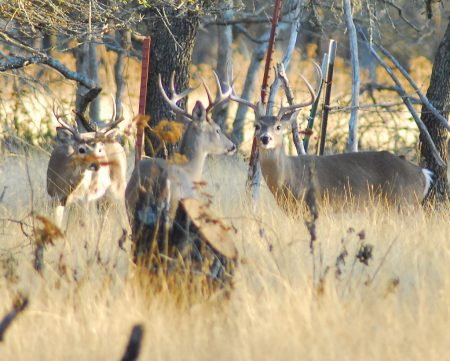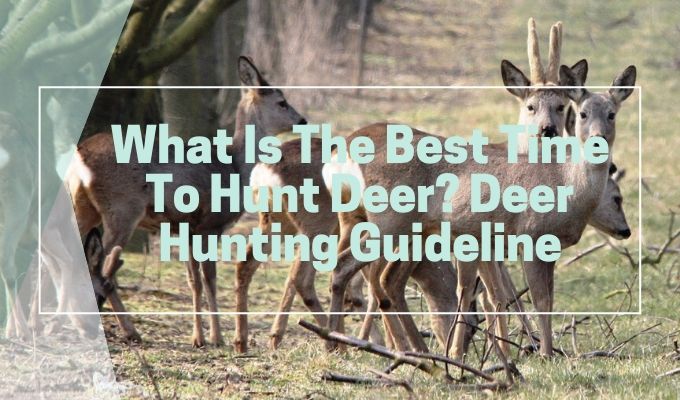Hunting is in the blood of us. From the Stone Age, people began to hunt for survival. So the real hunters know how and when to get the best gift for them. It’s a bit tricky to beginners, though.
As a beginner, you might have heard a lot of tactics around you to catch a deer. Proper timing is the most useful and effective thing for hunting deer. But how to know the best time to hunt Deer, this article is all about that. Read on now, man!
The most common mistake made by many young hunters is that they believe that hunting Deer only means preparing your equipment like recurve bow or crossbow or rifle and shooting the Deer. No way, man! This is the last move after the Deer has been found, but how do you find it? One must keep in mind that hunting the Deer is a game of odds. It’s a game of assessments, too.

Understanding when to capture, when not to, and when the surroundings are best for you is part of the gaming process. Usually, the best time for deer hunting is when they’re more active.
If you’re going through the history of hunting properly, you’ll see the expert bow hunters talking about having the greatest success in the evening or the time when Sunsets or rises.
But the million-dollar question is, “What is the best time of day to hunt deer?” Are you supposed to track in the late afternoons? Can you hunt Deer at night? Could you make an older buck near the start of the season?
These are actually one or two of the various issues for inexperienced hunters to ask about before joining the put up for the first time.
Let’s explain those queries one by one.
So, What Is The Best Time To Hunt Deer?
As we have said, deer do not follow any particular route, but the high time of deer hunting is just after daylight and just before dark. But there are both pros and cons of hunting in the morning and the evening.

Deer is more active during the night because that’s when they’re going out to get food. However, hunting during the night is prohibited in some states. Because the minimal light source could put a lot of stress on your accuracy, it could hurt other hunters instead of Deer, too.
So, hunting in the morning is going to give you good light. But again, it also clashes with your sleeping schedule.
It’s hard to measure the best time to go hunting with a single factor. There are many other variables to consider, such as their daily activities, their eating habits, their biological state, the weather, the season, and even the shape of the moon. All of these things could have a major impact on deer behavior. To be a good hunter, it is important that you take into account each and every one of them.
We’re going to try to cover every point in detail on how to analyze all of these and use them to your lead in the rest of our articles.
Deer’s Daily Routine/Activities
It’s imperative to understand the regular route to catch your prey when they’re off guard. Deer usually take their food in the night and sleep in the daytime. They are not, however, wholly nocturnal or diurnal.
In fact, they’re crepuscular, as they’re more active during the dusk and dawn. The explanation for this action is to avoid predators.
Deer wakes up anywhere from 3 p.m. to 6 p.m. and heads for food. At that time, they’re becoming more active. They start walking around and grazing the woods and other food sources. They started going back to their bedding sites when the night deepened.
A few hours later (6 a.m. to 10 a.m.), they would go out to eat again. Going to eat the last meal of the day. Then, in the morning, they would go back to their bedding sites.
But this isn’t all of it! Just as some humans want to get a midnight snack in the middle of their sleep, deer usually wakes up in the middle of the day (11 a.m. to 1 p.m.) to get a bite. After that, they’d go back to bed at about 1:30 p.m. to 3:30 p.m. prepare for the big night ahead.
Deer Hunting Season
The current season is also another aspect that plays a crucial role in deciding the behavior of the Deer. Expert hunters divided the season into three phases – early, mid and late. We’re going to get some insight into those.
Early Season
The early season begins in the first week of September and lasts up to a few weeks in October. In some states, however, hunters can be found in the woods as early as August.
There are many benefits to early season hunting. Many seasoned hunters call it ‘The Second rut’ because deer behavior patterns are highly predictable at this time. They’re less weary, and there is no hunting pressure too.
Mid-Season
Mid-season starts in October when most hunters witness a declining trend of Deer. This is mainly due to the over-pressure of the hunt during the season opener.
Nonetheless, this season is an excellent time to hunt whitetail as the numbers, and the sightings are limited for other varieties. Mature bucks, in turn, are easier to find in these days than in the early season.
Late Season
This is one of the most challenging seasons because it’s a rut or breeding season. We’re not going to hunt too much during the rut, because this is when the bucks get more wild and restless.
Their hormones are at a peak that possibly attracts new flocks. During this time, their movements and behaviors are becoming less and less predictable. Even expect some malicious activity during the day.
Other Timing factors
1. Temperature
There is a significant impact of the day temperature on the deer movement. Which temperature is suitable for the hunt a deer? We generally have ideas that warmer temperature is ideal than colder. But that is absolutely wrong. Cold is the more suitable temperature to catch your prey.
Why! Let us explain it. Cold climate is much more ideal for Deer since too much heat would just make them lethargic to sleep more during the daytime.
But, any significant change in temperature (up or down) also brings Deer to their feet. So, before you make your strategy, monitoring the forecast, and calculating the temp-induced adjustments is the ideal way to fill the deer marks. Decreases in temperature are therefore more successful than rises but do not ignore the increase in mercury. They have an influence, too.
2. Weather
A little rain never can defeat a hunter; instead, it helps him to get his kill. Minor weather events, such as pop-up rains and hurricanes, can drive Deer to move. If these small weather events occur during the first or last few hours of daylight, they tend to have an even more significant effect on whitetails.
On the other hand, there is a relation between changes in temperature and the weather. Many animals have powerful senses, allowing them to feel the immediate environment event. Unexpected rainfall or snowfall would undoubtedly push a deer to its feet.
3. Air pressure
In many studies on the hunting of Deer, it has been shown that the movement of deer heights when the barometer hits 30. Although the barometric pressure studies are somewhat inconsistent, most of them seem to suggest that Deer do respond to this environmental phenomenon.
4. Availability of Resources
Deer also, according to the rules of survival, choose the spot where they get the maximum comfort. So, it’s essential to keep that in mind when you select your site. Otherwise, you’re probably going to go home empty-pocket.
Try to determine areas where there are available high-quality food and water sources as well as suitable for bedding conditions. Any place with an abundance of these resources is probably an ideal place to start hunting.
5. The phase of the Moon
As we said earlier, that Deer is not a nocturnal species. They have limited vision at night time, therefore. So, it’s clear that they’re going to use the moonlight at best. It is observed that in the full moon, deer are likely to take more food and try early bedding while they are taking more bedding during the first moon. Nevertheless, this proposal is opposed by many hunters.
6. Hunting Pressure
You won’t get many deer populations in areas where hunters put much pressure on the previous year. You will, therefore, have more chances to catch your prey in an area that other hunters have not yet discovered. Apart from the above, there would be less pressure, where the animals would possibly not be guarded and on the bottom.
Conclusion
Are you clear about the best time to hunt deer? we tried our best and shared everything we learn. Now, If you are planning to hunt a deer this season, we recommend that you evaluate the data from previous years, check the weather parameters, and use it as your advantage. Keep consistency and patience, too, as they are the secrets to success in your quest. Ready to play!
Also Read: Bow Hunting For Beginners | Basics and Vital Tips
